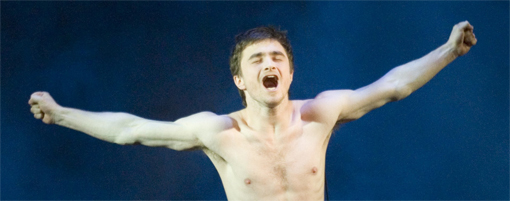National Video Archive of Performance
At the end of 2007 the National Video Archive of Performance recorded its 200th stage production. Jill Evans, their Video Archive Producer, provides an overview of their activities.
About the Author: Jill Evans was The National Video Archive of Performance’s Video Producer.
The National Video Archive of Performance, created by the Theatre Museum in Covent Garden (now relocated to the main Victoria & Albert Museum building in South Kensington and retitled ‘V&A Theatre Collections’) recorded its 200th production at the end of 2007. The catalogue includes West End hits like Equus starring Daniel Radcliffe, Royal Shakespeare Company and National Theatre productions like The Alchemist, classics, pantomimes, musicals, physical theatre and fringe. We had hoped to celebrate this milestone with a recording of either Michael Grandage’s Othello or the RSC’s production of King Lear with Ian McKellen (especially because our first recording in 1992 was the RSC production of Richard III – with Ian McKellen). The fact that we were unable to record either illustrates both the residual resistance to the very idea of recording the ephemeral art of theatre as well as some of the major practical problems we encounter during the process.
But first some history. When Margaret Benton became Director of the V&A Theatre Museum in 1990, she was aware, thanks to her background in television, that the technology was finally at hand for the recording of live performance. Not only would such recordings breathe life into exhibitions at the Museum and provide researchers with an audio-visual memory trace of a performance to complement the traditional objects in our archive collections, but they could revolutionise the teaching of drama as performance rather than as literature, provide an invaluable reference guide for the theatre profession and a detailed, objective account of individual performances for posterity.
With the technology available, copyright issues had to be addressed. Margaret eventually established a unique agreement with Equity, BECTU (the technicians’ union), the Musicians’ Union and the Writers’ Guild, which allowed for a recording to be made and edited at a live performance, with an audience, without payment to artists or stage management. The public would be able to view the tapes by appointment, free of charge and there was to be educational – but no commercial – use of the recordings.
Selection criteria were established, including artistic excellence, educational, historical or social significance, rarity, innovation, and works by significant writers, directors and designers. We would draw on the experience of critics, scholars and members of the theatre profession to counsel us.
 Learning on Screen
Learning on Screen
